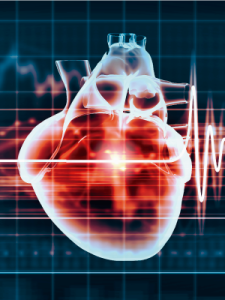Cardioversion
What Is A Cardioversion?
An electrical cardioversion for atrial fibrillation is used to “reset” the patient’s heart to a normal rhythm. An electrical shock is transmitted to the patient via patches or paddles on the outside of the chest. The patient is typically under a mild anesthesia and in a relaxed state for the procedure. Cardioversion procedures are found to be successful in many arrhythmia cases.
What Is Atrial Fibrillation?
Atrial Fibrillation is an abnormal heart rhythm that can cause shortness of breath, fainting, chest pain and heart palpitations. Commonly referred to as AF or A Fib, patient with this condition have a higher risk of stroke, heart failure, dementia, and even possible death.

Why Should I Have A Cardioversion?
Patients go through an electrical conversion procedure in order to treat arrhythmias. Atrial tachycardia, atrial flutter, and ventricular tachycardia cardioversion are found more successful when performed with the first episode of an atrial fibrillation, or if the patient is younger in age. Patients who have atrial fibrillation for under a year are also successful.
Are Any Tests Performed Prior To A Cardioversion?
Whether you are in our Nassau County office or one of our Suffolk County offices, your physician may want to run some electrophysiologic tests before a cardioversion is performed, in order to get a precise reason why your heart is beating irregularly. The tests study the electrical flow into the heart, and how the heart is pumping blood to the rest of your body, making sure there are no abnormalities as well. When the results are processed by the doctor and it is known where the arrhythmia is coming from, you will get a treatment plan for your abnormal heartbeat.
Is A Cardioversion Safe?
Although the complications from an electrical cardioversion are sparse, your doctor can further help reduce these risks. Patients sometimes have blood clots in their hearts that can be dislodged due to the cardioversion. These blood clots can cause life threatening complications, such as a stroke. Some patients will be prescribed a blood thinner a month before cardioversion to reduce such complications. However, some people will still take the blood thinner after the cardioversion to prevent blood clots from forming in the first place, thus eliminating complications from further developing.
Is There Only One Type Of Cardioversion?
There are several types of cardioversion used to treat cardiac arrhythmias. One, a pharmacologic cardioversion (also known as a chemical cardioversion), uses anti-arrythmia medicine instead of electricity to treat arrhythmia. Then there is the synchronized electrical cardioversion, a form of cardioversion where the electric current transmitted to the heart is in a therapeutic dose at a specific time in the cardiac cycle. When resuscitating a patient in cardiac arrest, the defibrillation is quite successful for patients related pulseless ventricular tachycardia and ventricular fibrillation.
Any questions or concerns, feel free to call us or click here, as well as make an appointment. We are here to help Long Islanders and accept most insurances.

